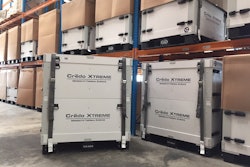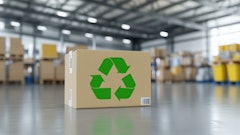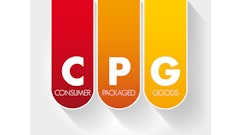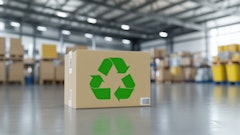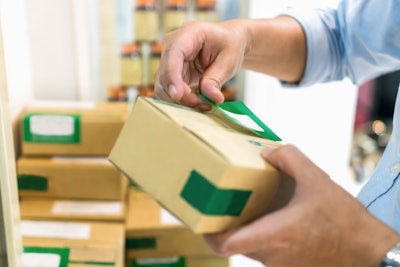
Returnable packaging has become a standard solution for part deliveries across the transportation sector as it economically makes more sense to pay once for a robust, reusable container that provides better protection for parts.
"It is our policy to reduce waste and ensure that we're able to build quality into our vehicles," Stephen Grant, international packaging manager at Jaguar Land Rover (JLR), tells Automotive Logistics.
JLR uses folding racks to reduce return freight costs and has standardized container footprints wherever possible to simplify handling. The approach works when transport loops are short, fast and tightly controlled. However, the process becomes more challenging once parts need to be shipped across the world. Automotive Logistics reports that if carmakers use returnable packaging for 80-90 percent of parts flow within in-country or in-continent lanes, the figure for long-distance international routes would be 10 percent or less.
Though, it has been challenging to get a return on investments. The risk of extra costs may rise when packaging is lost, damaged or delayed - meaning long-distance returnable solutions won't be viable.
"When you look at returnable solutions on these long routes, you have to deal with the additional cost of return freight. And because shipping durations are so much longer, you need more containers in the loop, which adds to purchase costs or hire fees. It also becomes more difficult to manage the container fleet - tracking containers, providing maintenance and repail and ensure that suppliers never run short," Grant says to Automotive Logistics.
Returnable solutions would be favorable when there is a flow that uses the packaging both ways, effectively cutting return transport costs significantly. Additionally track and trace technologies cold help reduce the cost and risk of lost containers.
Automotive Logistics reports that returnable containers could be used to cut waste in supply chains.
"An international pooling solution might involve customers from two different industries, or might involve flows where containers move through three or more routes before they return to origin," Vanessa Stark, director of strategic marketing, at Chep tells Automotive Logistics reports.
To read the full original article, please click here.




